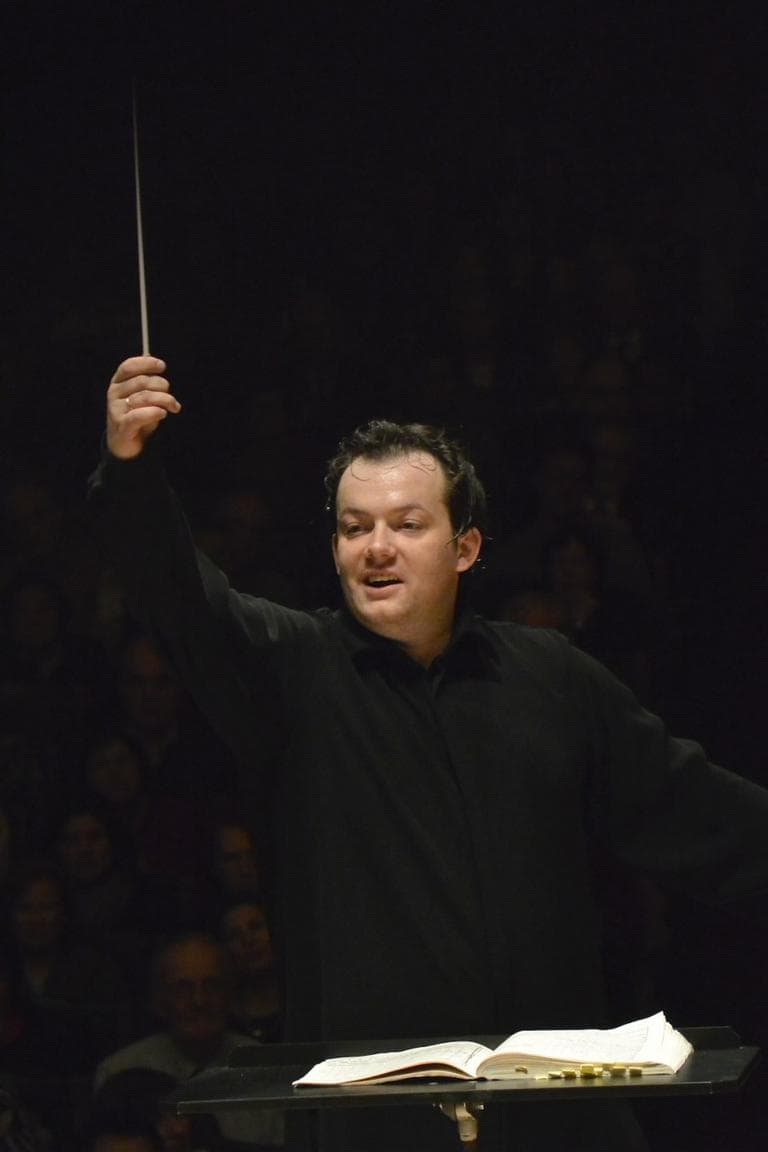Advertisement
Andris Nelsons And The BSO — Really Rocking In Boston?
The Boston Symphony Orchestra has anointed Andris Nelsons its new artistic director. That they would go with such a youthful, charismatic choice speaks well of the BSO’s commitment to meet the 21st Century with a measure of dynamism. The BSO has not always been so friendly toward youth, having turned down Leonard Bernstein for Charles Munch and Michael Tilson Thomas for Seiji Ozawa. Ozawa was only nine years his senior, but at least a generation older as things turned out.
But let’s not be ageist about it. James Levine led the BSO out of the doldrums when he took over, even if his health prevented him from taking them to the promised land. One of the knocks on him, though, was that he never became part of the musical community.
As someone who has spent more time with theater folk, I can see why that’s an important issue. Nicholas Martin throwing open the doors of the Huntington to local actors and playwrights, when he became artistic director in 1999, helped make Boston a more livable city for the theater community. Peter DuBois has kept pace the past five years. The same goes for the Huntington anchoring the Boston Center for the Arts, making it a destination for a whole host of adventurous theatrics.
Still, that’s not the crucial element. The key to Nelsons’ success is whether he can make Symphony Hall an exciting place to be. I don’t think that was really ever true for Levine except for the dedicated Cult of Jimmy, who thrilled to his rapturous performances of 19th and 20th century music, as did I, and were equally enamored of his very narrow modern and contemporary aesthetic. (Shostakoviches and Golijovs need not apply.)

So how do you make Symphony Hall rock? First of all, you build on Levine’s successes. He made the BSO a first-class ensemble, which it hadn’t been in the last years of Ozawa, maybe it never was under him. But while Ozawa was running the show there were spectacular teamings in other cities – Christoph von Dohnanyi and the Cleveland Orchestra, Esa Pekka-Salonen and the Los Angeles Philharmonic, and — yes — Tilson Thomas and the San Francisco Symphony.
How did they do it? First of all, there was a chemistry between conductor and orchestra that led to great performances of the traditional repertoire. Pick up any of their recordings, still available at ArkivMusic if nowhere else, and listen for yourself. They are pretty much all first-class and bear testament to a vital relationship.
Levine had that relationship with the BSO, but there was still an eat-your-vegetables quality to the work that the other conductors got around by championing more accessible contemporary composers, such as John Adams, Nicholas Maw and Magnus Lindberg. Each of those conductors also loved more tonal 20th century composers like Shostakovich, whom Levine pretty much despised.
It was gratifying to see that Lindberg is one of Nelsons’ favorite contemporary composers. But if his upcoming concerts with the BSO are any indication, Nelsons' taste seems pretty conservative. He’ll be conducting Verdi’s Requiem July 27 at Tanglewood. He’ll also be on the podium next season at Symphony Hall (though he doesn’t officially begin till the one after that) with a program of Wagner, Mozart and Brahms in October and a concert performance of Strauss’s “Salome” in March of 2014.
Classical music has gone from a prime-time network television event to an increasingly elitist endeavor. How do you change that?
But even that isn’t the issue anymore. Classical music is increasingly marginalized every year. In the lifetime of many of you who are reading this, it has gone from a prime-time network television event to an increasingly elitist endeavor. In sports terms it has gone from pro basketball to polo.
And yet those of us who love it know that it has as much to say about the world we live in as any other musical form — more. Of all the things that Nelsons needs to accomplish, it’s changing the perception of classical music.
So how do you change that perception without becoming the Pops? You acknowledge all that’s been said thus far — passionate playing, smart repertoire with an eclectic choice of contemporary music, being a part of the community, advocating for musical education in the schools and/or stepping in to fill the breech.
But there’s one other thing and that’s making Symphony Hall accessible to everyone, not just the elite — making it a cool place to go. Other orchestras have taken steps in that direction — the LA Philharmonic with Salonen's successor, Gustavo Dudamel; the New York Philharmonic with Alan Gilbert.
Let’s add the BSO with Andris Nelsons to that list. Symphony Hall, like just about every theater in town, is built as a fortress to keep the riffraff out. Tear down this wall, Mr. Gorba — sorry — Mr. Nelsons. You’re a Michael Jackson fan.
So let’s open things up. Let’s rock.
This program aired on May 17, 2013. The audio for this program is not available.
